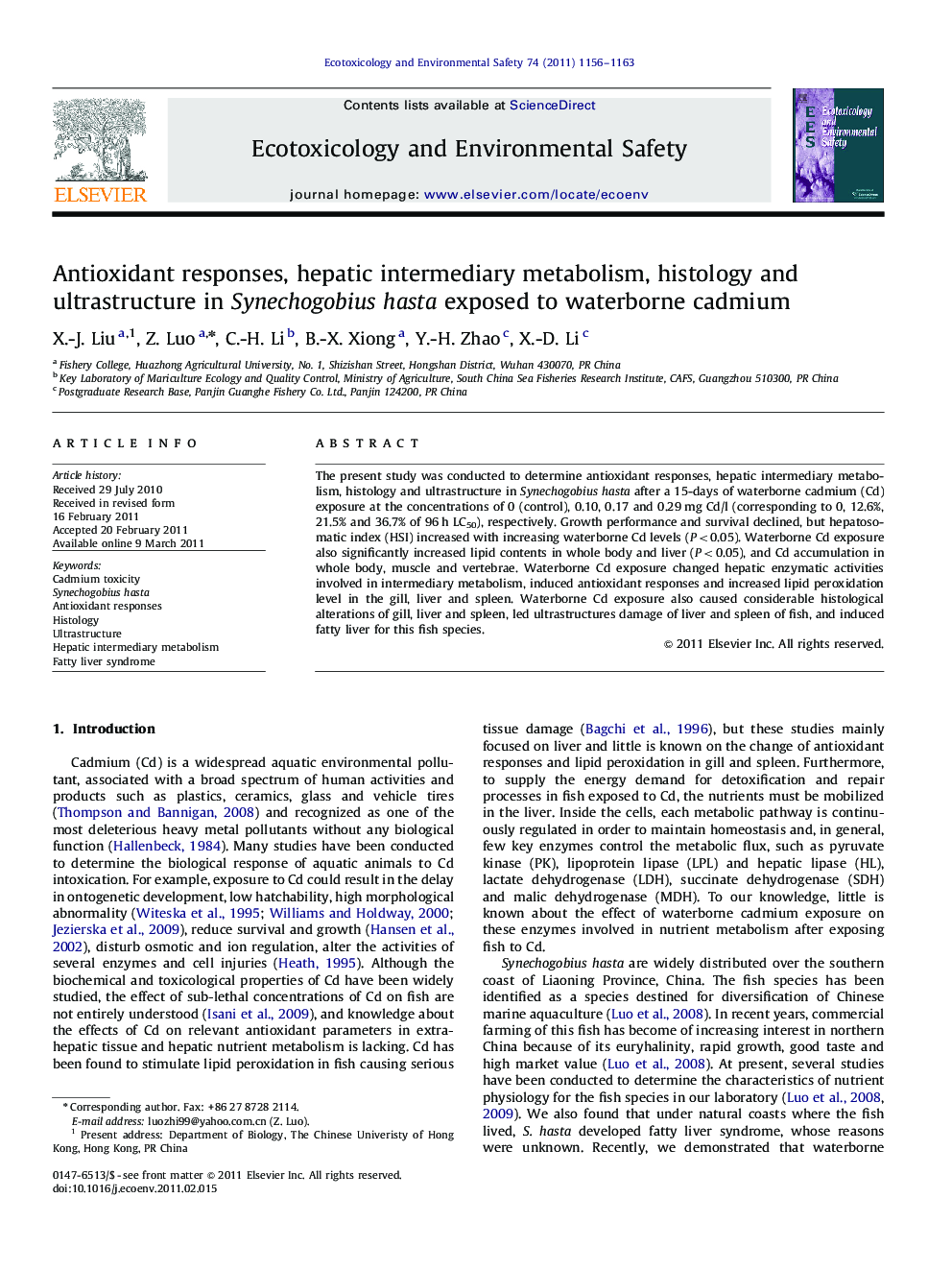| Article ID | Journal | Published Year | Pages | File Type |
|---|---|---|---|---|
| 4421190 | Ecotoxicology and Environmental Safety | 2011 | 8 Pages |
The present study was conducted to determine antioxidant responses, hepatic intermediary metabolism, histology and ultrastructure in Synechogobius hasta after a 15-days of waterborne cadmium (Cd) exposure at the concentrations of 0 (control), 0.10, 0.17 and 0.29 mg Cd/l (corresponding to 0, 12.6%, 21.5% and 36.7% of 96 h LC50), respectively. Growth performance and survival declined, but hepatosomatic index (HSI) increased with increasing waterborne Cd levels (P<0.05). Waterborne Cd exposure also significantly increased lipid contents in whole body and liver (P<0.05), and Cd accumulation in whole body, muscle and vertebrae. Waterborne Cd exposure changed hepatic enzymatic activities involved in intermediary metabolism, induced antioxidant responses and increased lipid peroxidation level in the gill, liver and spleen. Waterborne Cd exposure also caused considerable histological alterations of gill, liver and spleen, led ultrastructures damage of liver and spleen of fish, and induced fatty liver for this fish species.
